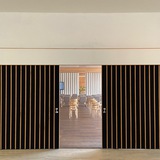Вестник постмодернизма №163
Поскольку мы продолжаем путешествовать по Нижегородской земле, в очередной воскресной заметке о постмодернизме обратимся к одной из важных городских построек, являющейся преемницей архитектурного прошлого Нижнего Новгорода. Речь идет об административном здании на углу ул. Фрунзе и Большой Печерской, получившем название «Башня-репродуктор». Построенное в 1994-1995 гг. по проекту нижегородских архитекторов Александра Харитонова и Евгения Пестова при участии Сергея Попова и Игоря Гольцева, это здание в духе неорегионализма отсылает к богатому прошлому Нижнего Новгорода как в архитектурной плоскости, так и в культурно-исторической.
Как известно, в 18-19-х вв. Нижний Новгород, как и другие российские города, застраивался в основном по проектам, содержавшимся в «образцовых альбомах». Когда в 1858 г. это правило упразднили, зодчие и их заказчики из купеческого сословия дали волю своим чувствам, породив великое множество эклектичных построек, в которых в самых разных пропорциях перемешивались стили прежних эпох. В этом смысле «Башня-репродуктор» наследует нижегородской академической эклектике, сообщая прохожим о различных этапах городского прошлого без использования QR-кода, как это делают другие «говорящие дома» Нижнего Новгорода.
———
Sunday Postmodernism,
issue No. 163
We’re continuing to explore the architecture of Nizhny Novgorod and its surroundings and, since it’s time for our next installment of Sunday Postmodernism, would like to share a remarkable example of Neo-Regionalism that represents a pastiche of different local styles and typologies. Dubbed the Loudspeaker House, this administrative building was erected at the intersection of Frunze Ul. and Bolshaya Pecherskaya Ul. in 1994-1995 to the designs of prominent Nizhny Novgorod-based architects Aleksandr Kharitonov and Evgeny Pestov together with Sergey Popov and Igor Goltsev and respects both the architectural traditions and history of Nizhny Novgorod in general.
As you probably know, the 18th and 19th centuries saw Nizhny Novgorod as well as other Russian cities develop within the confines of government-approved "sample designs". The abolition of this rule in 1858 brought about an increasing demand for custom buildings that gave rise to a highly eclectic architecture of bits and pieces of different styles whose proportions were limited solely by the tastes and budgets of local merchants. Exemplifying this eclecticism of the past, the Loudspeaker Building does speak loudly about the architectural evolution of Nizhny Novgorod without using QR code plaques that can be found on the facades of other prominent buildings.
Поскольку мы продолжаем путешествовать по Нижегородской земле, в очередной воскресной заметке о постмодернизме обратимся к одной из важных городских построек, являющейся преемницей архитектурного прошлого Нижнего Новгорода. Речь идет об административном здании на углу ул. Фрунзе и Большой Печерской, получившем название «Башня-репродуктор». Построенное в 1994-1995 гг. по проекту нижегородских архитекторов Александра Харитонова и Евгения Пестова при участии Сергея Попова и Игоря Гольцева, это здание в духе неорегионализма отсылает к богатому прошлому Нижнего Новгорода как в архитектурной плоскости, так и в культурно-исторической.
Как известно, в 18-19-х вв. Нижний Новгород, как и другие российские города, застраивался в основном по проектам, содержавшимся в «образцовых альбомах». Когда в 1858 г. это правило упразднили, зодчие и их заказчики из купеческого сословия дали волю своим чувствам, породив великое множество эклектичных построек, в которых в самых разных пропорциях перемешивались стили прежних эпох. В этом смысле «Башня-репродуктор» наследует нижегородской академической эклектике, сообщая прохожим о различных этапах городского прошлого без использования QR-кода, как это делают другие «говорящие дома» Нижнего Новгорода.
———
Sunday Postmodernism,
issue No. 163
We’re continuing to explore the architecture of Nizhny Novgorod and its surroundings and, since it’s time for our next installment of Sunday Postmodernism, would like to share a remarkable example of Neo-Regionalism that represents a pastiche of different local styles and typologies. Dubbed the Loudspeaker House, this administrative building was erected at the intersection of Frunze Ul. and Bolshaya Pecherskaya Ul. in 1994-1995 to the designs of prominent Nizhny Novgorod-based architects Aleksandr Kharitonov and Evgeny Pestov together with Sergey Popov and Igor Goltsev and respects both the architectural traditions and history of Nizhny Novgorod in general.
As you probably know, the 18th and 19th centuries saw Nizhny Novgorod as well as other Russian cities develop within the confines of government-approved "sample designs". The abolition of this rule in 1858 brought about an increasing demand for custom buildings that gave rise to a highly eclectic architecture of bits and pieces of different styles whose proportions were limited solely by the tastes and budgets of local merchants. Exemplifying this eclecticism of the past, the Loudspeaker Building does speak loudly about the architectural evolution of Nizhny Novgorod without using QR code plaques that can be found on the facades of other prominent buildings.
❤31🔥13👍8👎3
group-telegram.com/midcenturymodern/14914
Create:
Last Update:
Last Update:
Вестник постмодернизма №163
Поскольку мы продолжаем путешествовать по Нижегородской земле, в очередной воскресной заметке о постмодернизме обратимся к одной из важных городских построек, являющейся преемницей архитектурного прошлого Нижнего Новгорода. Речь идет об административном здании на углу ул. Фрунзе и Большой Печерской, получившем название «Башня-репродуктор». Построенное в 1994-1995 гг. по проекту нижегородских архитекторов Александра Харитонова и Евгения Пестова при участии Сергея Попова и Игоря Гольцева, это здание в духе неорегионализма отсылает к богатому прошлому Нижнего Новгорода как в архитектурной плоскости, так и в культурно-исторической.
Как известно, в 18-19-х вв. Нижний Новгород, как и другие российские города, застраивался в основном по проектам, содержавшимся в «образцовых альбомах». Когда в 1858 г. это правило упразднили, зодчие и их заказчики из купеческого сословия дали волю своим чувствам, породив великое множество эклектичных построек, в которых в самых разных пропорциях перемешивались стили прежних эпох. В этом смысле «Башня-репродуктор» наследует нижегородской академической эклектике, сообщая прохожим о различных этапах городского прошлого без использования QR-кода, как это делают другие «говорящие дома» Нижнего Новгорода.
———
Sunday Postmodernism,
issue No. 163
We’re continuing to explore the architecture of Nizhny Novgorod and its surroundings and, since it’s time for our next installment of Sunday Postmodernism, would like to share a remarkable example of Neo-Regionalism that represents a pastiche of different local styles and typologies. Dubbed the Loudspeaker House, this administrative building was erected at the intersection of Frunze Ul. and Bolshaya Pecherskaya Ul. in 1994-1995 to the designs of prominent Nizhny Novgorod-based architects Aleksandr Kharitonov and Evgeny Pestov together with Sergey Popov and Igor Goltsev and respects both the architectural traditions and history of Nizhny Novgorod in general.
As you probably know, the 18th and 19th centuries saw Nizhny Novgorod as well as other Russian cities develop within the confines of government-approved "sample designs". The abolition of this rule in 1858 brought about an increasing demand for custom buildings that gave rise to a highly eclectic architecture of bits and pieces of different styles whose proportions were limited solely by the tastes and budgets of local merchants. Exemplifying this eclecticism of the past, the Loudspeaker Building does speak loudly about the architectural evolution of Nizhny Novgorod without using QR code plaques that can be found on the facades of other prominent buildings.
Поскольку мы продолжаем путешествовать по Нижегородской земле, в очередной воскресной заметке о постмодернизме обратимся к одной из важных городских построек, являющейся преемницей архитектурного прошлого Нижнего Новгорода. Речь идет об административном здании на углу ул. Фрунзе и Большой Печерской, получившем название «Башня-репродуктор». Построенное в 1994-1995 гг. по проекту нижегородских архитекторов Александра Харитонова и Евгения Пестова при участии Сергея Попова и Игоря Гольцева, это здание в духе неорегионализма отсылает к богатому прошлому Нижнего Новгорода как в архитектурной плоскости, так и в культурно-исторической.
Как известно, в 18-19-х вв. Нижний Новгород, как и другие российские города, застраивался в основном по проектам, содержавшимся в «образцовых альбомах». Когда в 1858 г. это правило упразднили, зодчие и их заказчики из купеческого сословия дали волю своим чувствам, породив великое множество эклектичных построек, в которых в самых разных пропорциях перемешивались стили прежних эпох. В этом смысле «Башня-репродуктор» наследует нижегородской академической эклектике, сообщая прохожим о различных этапах городского прошлого без использования QR-кода, как это делают другие «говорящие дома» Нижнего Новгорода.
———
Sunday Postmodernism,
issue No. 163
We’re continuing to explore the architecture of Nizhny Novgorod and its surroundings and, since it’s time for our next installment of Sunday Postmodernism, would like to share a remarkable example of Neo-Regionalism that represents a pastiche of different local styles and typologies. Dubbed the Loudspeaker House, this administrative building was erected at the intersection of Frunze Ul. and Bolshaya Pecherskaya Ul. in 1994-1995 to the designs of prominent Nizhny Novgorod-based architects Aleksandr Kharitonov and Evgeny Pestov together with Sergey Popov and Igor Goltsev and respects both the architectural traditions and history of Nizhny Novgorod in general.
As you probably know, the 18th and 19th centuries saw Nizhny Novgorod as well as other Russian cities develop within the confines of government-approved "sample designs". The abolition of this rule in 1858 brought about an increasing demand for custom buildings that gave rise to a highly eclectic architecture of bits and pieces of different styles whose proportions were limited solely by the tastes and budgets of local merchants. Exemplifying this eclecticism of the past, the Loudspeaker Building does speak loudly about the architectural evolution of Nizhny Novgorod without using QR code plaques that can be found on the facades of other prominent buildings.
BY Mid-Century, More Than
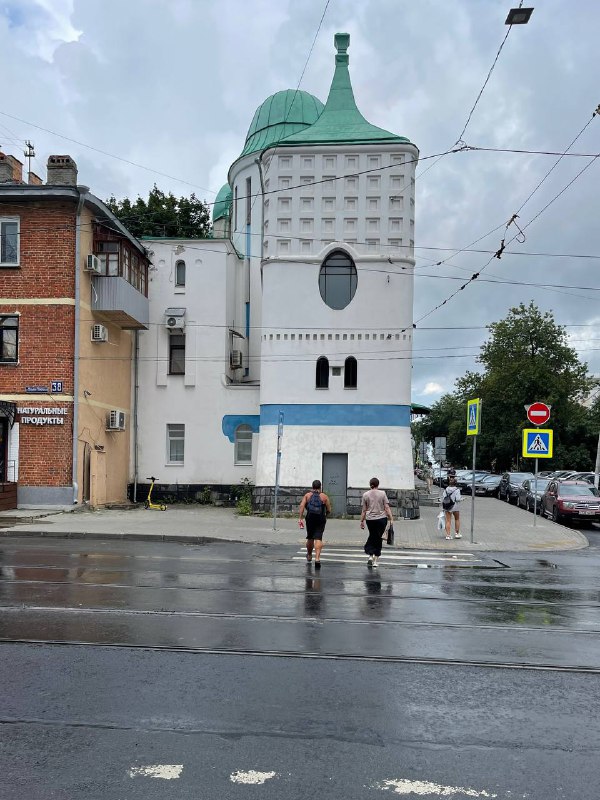
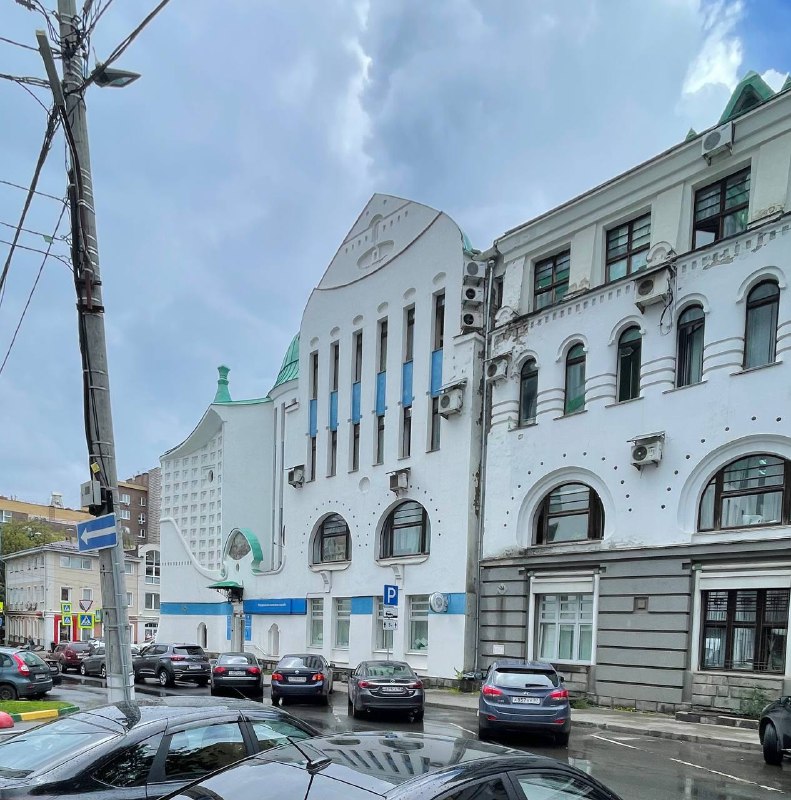

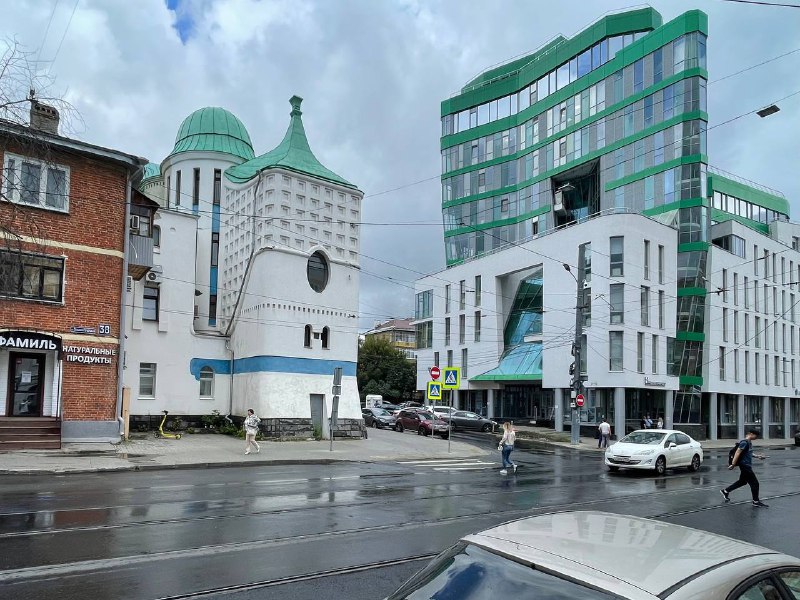
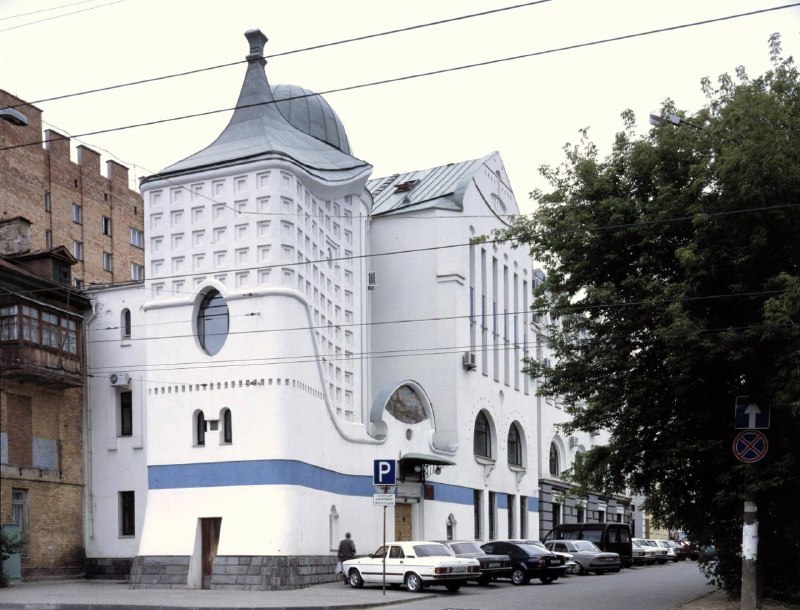


Share with your friend now:
group-telegram.com/midcenturymodern/14914
